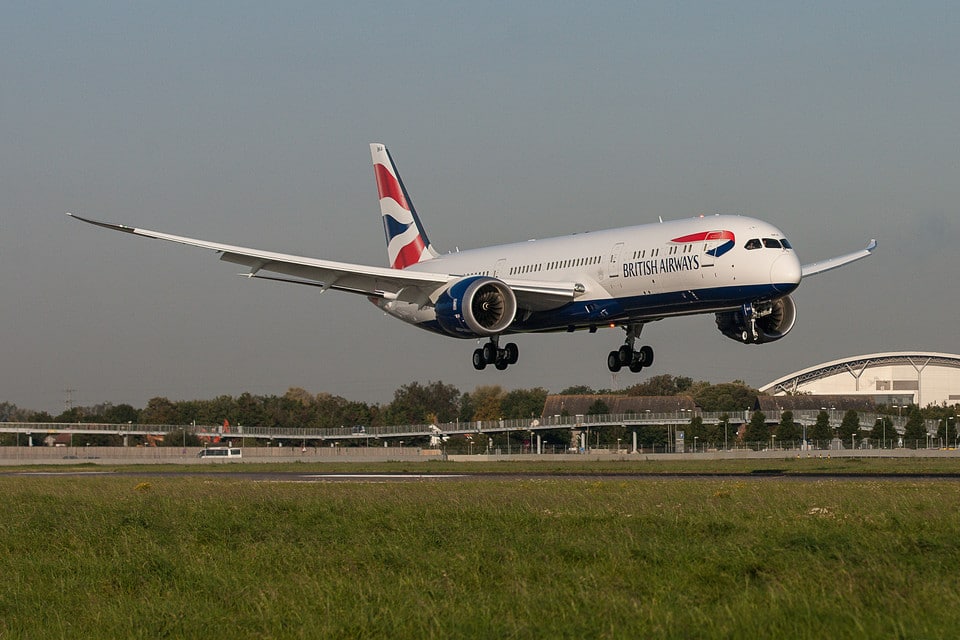Aerospace
British Airways takes next step towards developing sustainable aviation fuel
British Airways takes next step towards developing sustainable aviation fuel

An agreement between British Airways, LanzaJet, and Nova Pangaea Technologies will expedite the groundbreaking Project Speedbird initiative to create affordable sustainable aviation fuel (SAF) for use in the UK’s commercial aviation sector.
Qantas and Airbus Partnership for the biofuel industry.(Opens in a new browser tab)
In accordance with the agreement, British Airways’ parent company, IAG, will contribute to the project in order to support the next stage of research and development efforts aimed at decarbonizing the aviation sector.
Project Speedbird has now submitted an application for a grant from the DfT’s Advanced Fuels Fund, which will be essential to the project’s continued development as the DfT works to implement its recently unveiled Jet Zero strategy, which includes enforcing a SAF mandate that will go into effect in 2025 and mandate that at least 10% of UK jet fuel be SAF by 2030.
Project Speedbird would convert 102 million litres of SAF annually from sustainable agricultural and wood waste. The facility, which is slated to be built in North East England, could start construction as early as 2023, and production of SAF is anticipated to begin in 2026. In order to power some of its flights, British Airways plans to offtake all SAF created through Project Speedbird. On a net lifecycle basis, the SAF generated would cut CO2 emissions by 230,000 tonnes annually.
Utilizing a combination of cutting-edge technologies, the SAF will be created using Nova Pangaea’s REFNOVA® process for producing bioethanol and biochar from agricultural and wood waste. The bioethanol is then transformed using LanzaJet’s unique and patented alcohol-to-jet (ATJ) technology, the first of its kind in the world, to create SAF and renewable diesel.
In addition to creating hundreds of jobs and supply chain opportunities in the North East of England, Project Speedbird would significantly increase skilled employment there and contribute to the UK’s overall economic growth by promoting investments in green technologies. Furthermore, the facility would increase domestic production, enhancing the UK’s energy security.

Aerospace
When Ratan Tata was denied entry to the airfield at the Aero India show, he waited

During our visit to Aero India 2019, we had the unexpected opportunity to see Ratan Tata at the event, which was a thrilling moment for us. However, there was a surprising hiccup when the security staff didn’t allow him to enter due to a lack of a security pass.
Despite this, he remained calm and patiently waited for about 20 minutes until a member of the Tata team brought him the required pass, after which he calmly proceeded inside. It was a humbling sight, showcasing his composed demeanor even in such situations.
Ratan Tata ji is not only a renowned industrialist but also a trained pilot, holding a pilot’s license. In 2007, he became the first Indian civilian to fly the F-16 Falcon during the Aero India show in Bangalore—a proud moment for the nation.
His passion for aviation extended beyond flying, as he played a key role in shaping India’s aerospace industry. Under his leadership, Tata ventured into manufacturing and maintaining aerospace components while upholding its legacy of quality. Notably, Tata’s collaboration with Airbus to develop and manufacture the C295 aircraft is a testament to its growing influence in the sector.
-

 Aviation2 months ago
Aviation2 months agoMicrosoft Flight Simulator Raises $3 Million to Bring Back the An-225 Mriya
-

 Airlines2 months ago
Airlines2 months agoQantas Engineers Stage Walkout Over Cost of Living Concerns
-

 Airlines2 months ago
Airlines2 months agoQatar Citizens Can Travel to the United States Without a Visa
-

 Aviation2 months ago
Aviation2 months agoQatar Airways bans these new Electronic Devices on plane
-

 Airlines2 months ago
Airlines2 months agoJapan Airlines Rolls Out Free Domestic Flights to International Passengers
-

 Defence2 months ago
Defence2 months agoWhich Country Has the Largest Fleet of Fighter Aircraft?
-

 Airport2 months ago
Airport2 months agoWestern Sydney Airport Welcomes Its First Plane After 6 Years of construction
-

 Aviation2 months ago
Aviation2 months agoDid you know ? Once Boeing 747 carried 1088 passenger in 1991








